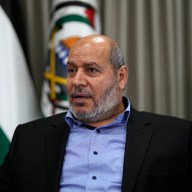This year’s $630-million transportation budget is being used for new interchanges, road widenings, LRT extensions, intersection improvements, bridge expansions and a couple of pedestrian bridges. Most of these projects are trucking along in cruise control, with one exception — the hotly contested pedestrian bridges.
Two gateway pedestrian bridges are in the works to cross the Bow River — the design and construction of the Peace Bridge west of Prince’s Island Park, and the design of another at the west end of St. Patrick’s Island. There is $25 million earmarked for both, less than four per cent of the total transportation budget — too much according to many.
Comments to online news stories about the bridges have been colourful and passionate.
Why, though, does the continued paving of our city in support of the single occupancy vehicle go unchecked? This year alone, we’re extending 96 Avenue N.E, widening 52 Street S.E., closing Rocky Ridge Road, twinning the Graves Bridge, upgrading 16 Avenue North, widening Shaganappi Trail, widening Beddington Trail, widening Country Hills Boulevard and constructing an interchange at Metis Trail and 64 Avenue N.E. That list does not include ongoing road maintenance costs, gravel removal in the spring, snow removal in the winter and a perennial list of other road-associated costs.
Of these expenditures, the only one that inspires public response is snow removal — the budget for this should apparently become limitless after a snowfall to ensure every side street in the city is bare.
Projected growth indicates the gateway bridges could see traffic of almost 5,000 people per day. The bridges are longer and wider than typical pedestrian bridges, allowing them to accommodate increased traffic, meaning they actually work out to be half the cost per person of a typical pedestrian overpass bridge. When compared to similar projects in North America, the costs for our bridges are in line or below others.
Expecting that providing context and justification for the bridges will pacify naysayers is like expecting a guard dog to stop barking when the doorbell rings because you ask him nicely. Fido, no comprende.
The reflex negative reaction these bridges have received relates back to similar responses to projects like curbside recycling — as a city we’re not willing to talk about or invest in sustainability. This kind of thinking will bury us.
While public debate is healthy, continually targeting certain kinds of projects is not.
















